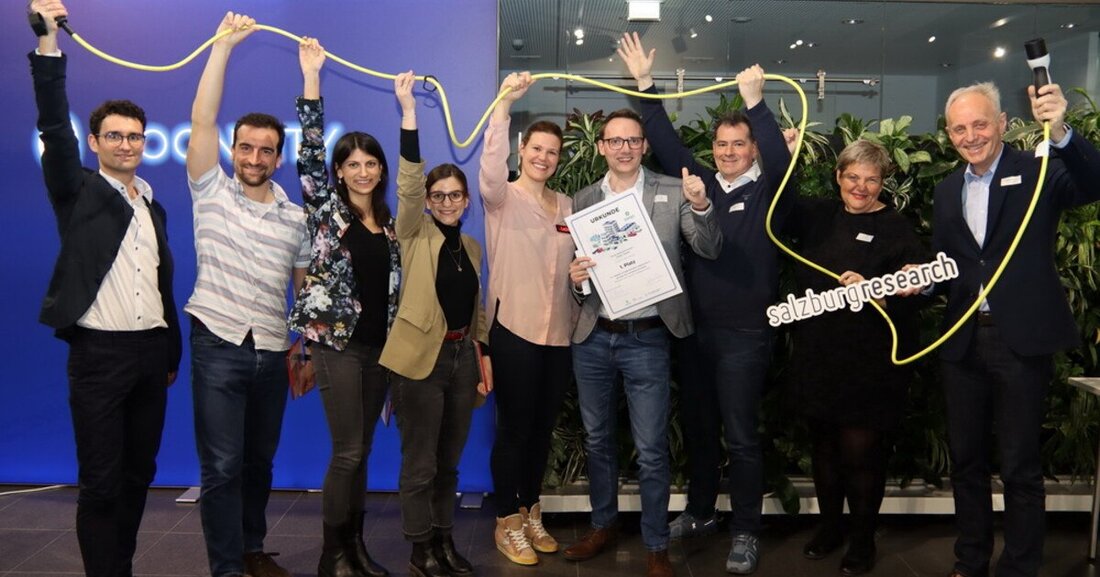The best ideas for recharging electricity
Salzburg Research honors the best ideas for smart energy sharing and new business models.

The best ideas for recharging electricity
What motivates owners of electric vehicles to make their batteries available for smart charging? How can consumers be supported so that they align their charging behavior more closely with the needs of the power grid? Which services and cooperation opportunities or business models arise from smart charging? Salzburg Research asked for the community's ideas through an open innovation ideas competition. A top-class jury of experts then evaluated the submissions. The best ideas were awarded on February 23, 2023 in MoonCity Salzburg.
Hotel guests usually use their car little or not at all during their stay at the hotel. Andreas Schhöfegger had the following idea: Those who connect their electric vehicle to the bi-directional charging station during their stay and thus offer it as a storage device for the hotel or region will receive discounts or goodies in return. Day guests can use an app to book a charging space and thus a reserved parking space in advance and release an individually definable storage portion of the electric vehicle as a “buffer”. In this way, the energy potential on the energy market can be planned and the need for fossil power plants can be reduced, especially at forecast times. Day guests are motivated by discounts and gamification methods.
According to Werner Fürst, who came up with the idea, bidirectional charging stations should be placed in company parking lots in the “VIP area” near the entrance – where management usually parks. In P+R parking spaces, the bidirectional charging stations should be directly next to the bus or train boarding point. In inner-city parking areas and customer parking spaces, these are located close to neighboring residential buildings and can be used by non-customers after closing time. Anyone who charges there also gives their consent for bidirectional power flow. The battery is kept in the optimal range between 40 and 80 percent. During the docking time, no more than 30 percent is released; if there is a lot of excess, up to 80 percent is charged. The charging areas are – where appropriate – covered with PV panels. Where this does not make sense, lawn tiles are used. Because electric cars don't lose any oil and the floor is less sealed.
Frank Dobbert presented his idea of decentralized car sharing offers through housing associations. They offer their tenants and homeowners an integrated energy solution that consists of tenant electricity, their own photovoltaic systems and e-car sharing vehicles. The vehicles can be ordered via an internal app with a lead time for better planning. The housing association becomes the sole contractual partner of the network operators and can also make the vehicles available as a power buffer and, if necessary, block them for use. Everyone involved benefits: Tenants or owners have a shared vehicle available for use close to their apartment, and bi-directional charging may be correspondingly cheaper. The housing associations benefit from additional income or use the vehicles themselves as an energy buffer for the in-house PV systems. The network operator gets new, planning-secure B2B fleet customers.
The ideas from this open innovation process flow into international research work as scenarios and business opportunities. In “GAMES – Grid Aware Mobility and Energy Sharing”, the researchers focus on the question of how the digitalization of electric shared vehicle fleets can satisfy mobility needs and at the same time create new sources of income by providing services for electricity grid operators and energy communities.

 Suche
Suche
 Mein Konto
Mein Konto